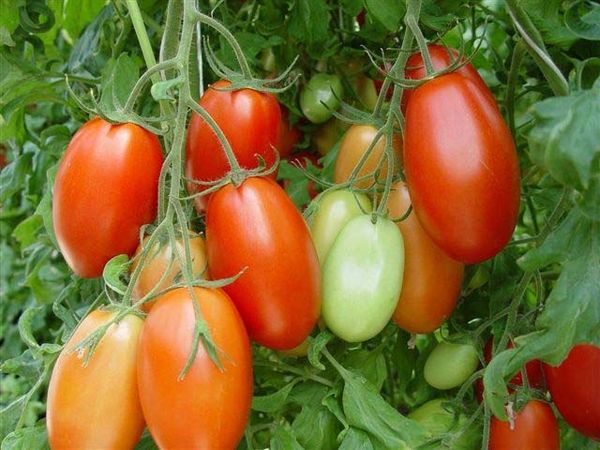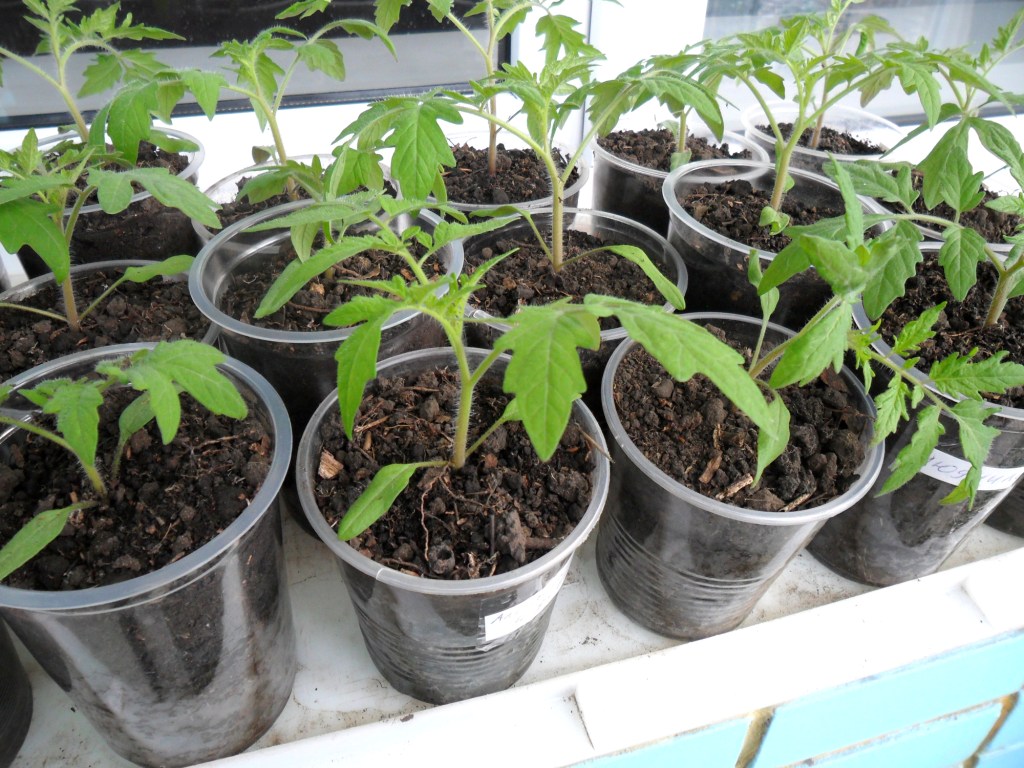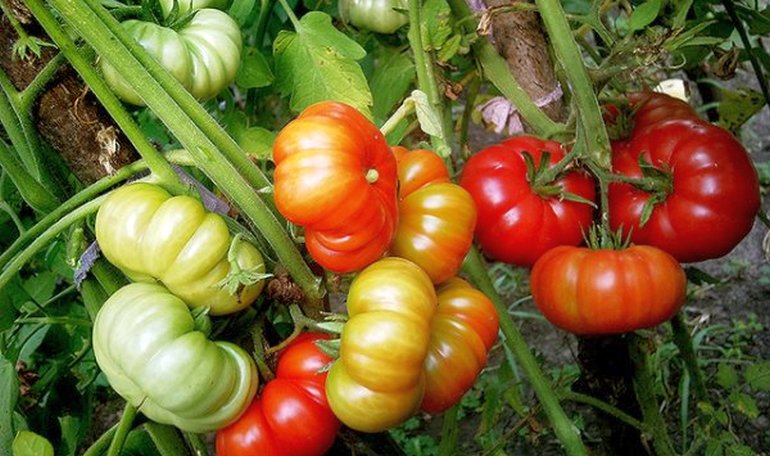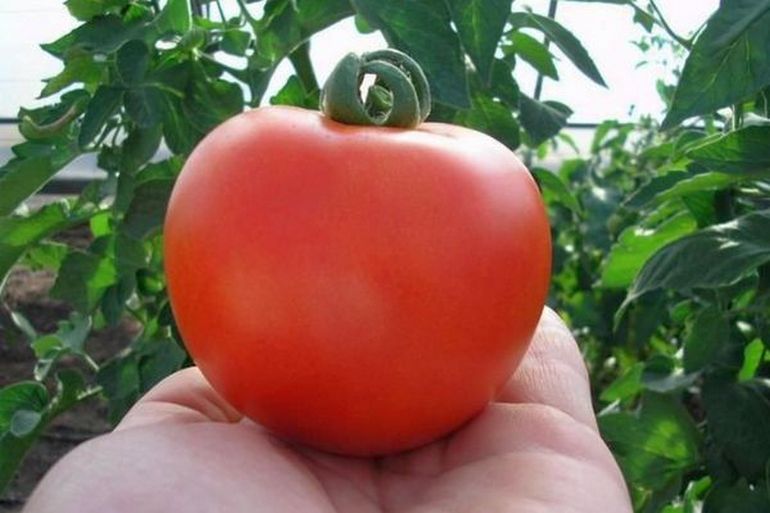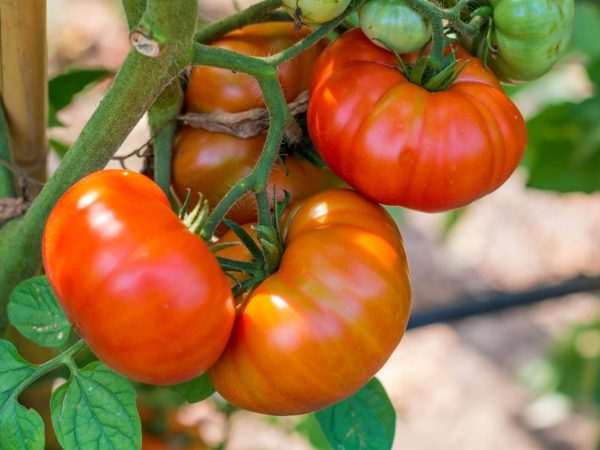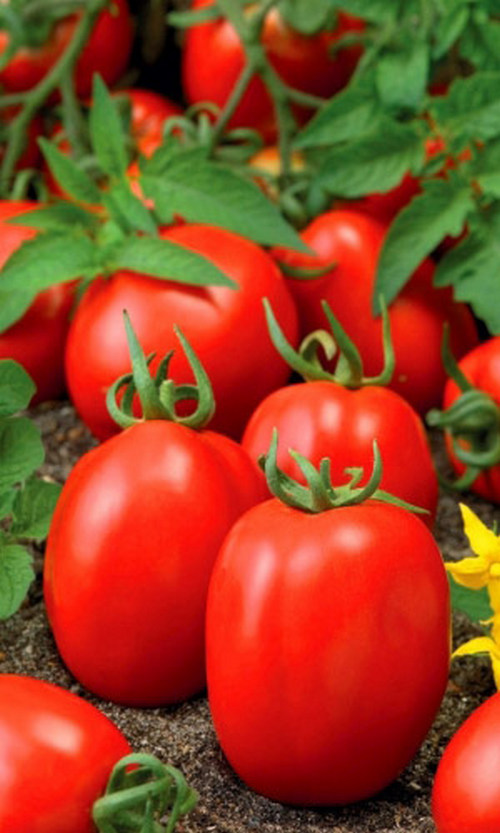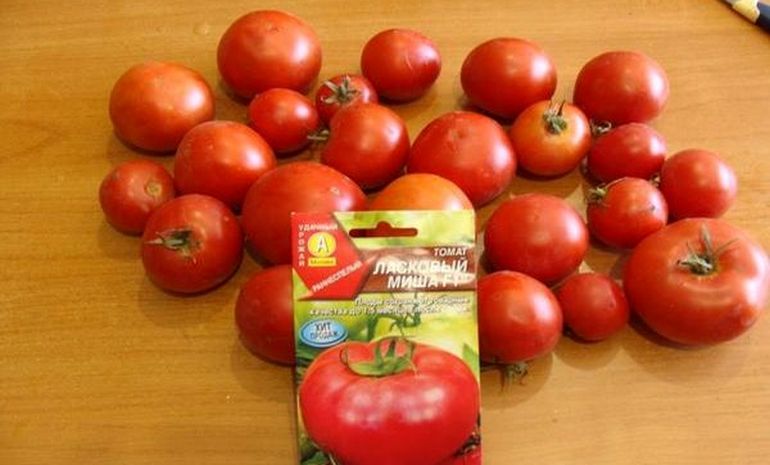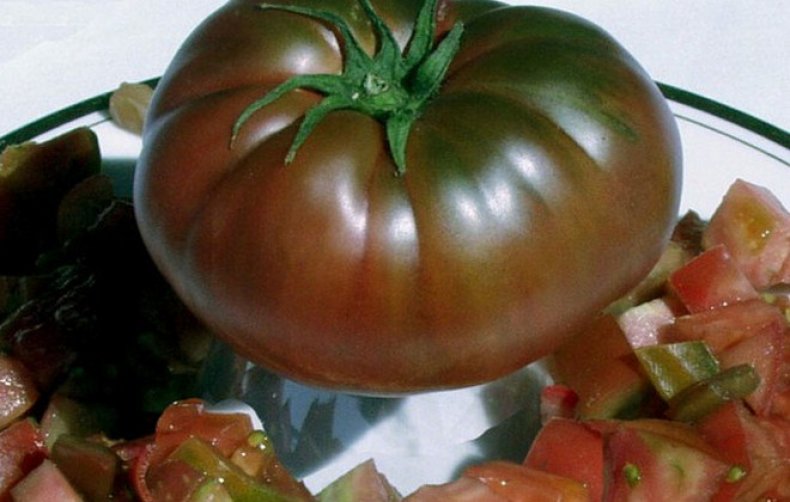Content:
Tomato Roma is a range of tomato varieties obtained by breeders from the United States. Roma F1 and Roma VF were bred in the last century and are very popular in many countries (America, Australia, Mexico, Ukraine). In Russia, this variety is not yet widespread, it is also not included in the unified State Register of varieties, but its features are undeniably worthy of attention.
It is intended for planting in open ground only in the southern regions of the country; in other areas, cultivation in greenhouses or under a film cover is required. Consider the tomato Roma description.
Roma tomato characteristics and variety description
Roma tomatoes are a mid-ripening hybrid with a long fruiting period; technical maturity occurs 118-125 days after germination.
The plant is a determinant type, the bushes are powerful, compact, height - 55-75 cm. The bush is medium-branched, medium-leaved, the leaves are large, green.
The fruits are small - from 60 to 110 grams. Tomatoes can be plum, cylindrical, slightly elongated, ovoid with a pronounced "nose". In exceptional cases, there are even ribbed fruits. The ripe color is red, the unripe color is light green. The pulp is fleshy, juicy, moderately dense, sugary, with a high dry matter content, with a minimum number of seeds. The rind is firm, smooth, slightly shiny. The taste is delicate, sweet, with a distant sourness.
There are a lot of fruits on the bush, support is required. Tomatoes are very well stored, they tolerate transportation over a long distance. Used for raw consumption, for the preparation of various dishes and for preservation. They are even frozen, while all the beneficial substances and flavor characteristics are preserved.
Tomato bloom begins 70-90 days after planting the seeds. These figures largely depend on the conditions of maintenance: soil, climate and irrigation. Flowers are usually light yellow in color.
The yield is high - from 6 to 15 kg per sq. meters. Tomato Roma VF is slightly inferior to F1 in this indicator.
Seedlings do not tolerate low temperatures and high humidity. The plant is thermophilic, it needs a lot of sunlight for good yields.
There are no pronounced differences between the Roma F1 and Roma VF tomatoes.
Roma tomato agrotechnology
Tomatoes are very photophilous, it is imperative to provide the seedlings with additional artificial light; in the open field, choose a sunny place for planting, without tall trees and bushes to avoid shading.
Tomatoes are grown in a seedling and non-seedling way, the first is preferable, since the second method does not give the desired result.
Seeds are sown for seedlings in late March - early April. They are laid in the prepared soil no deeper than 2 cm, moistened, covered with a film and removed to a warm, bright place until sprouts appear. Seed selection (saline solution), disinfection (potassium permanganate solution is used for this) and hardening are carried out in advance. For hardening, the seeds are wrapped in damp gauze and refrigerated for 2-3 days (+ 2 ° C).
The picking of seedlings is carried out in the phase of 1-2 true leaves.
Humidity and lighting should be closely monitored. Tomatoes do not tolerate excess water.
7-10 days before transplanting seedlings into open ground, the seedlings must be hardened.For this purpose, an artificial decrease in temperature to 8-10 degrees is created in the room, or the seedlings are taken out into the street for several hours.
The Romana tomato can be planted in any type of soil, except for heavy clay soils. It responds well to fertilized sandy loam and loamy soil. Excellent predecessors are: carrots, cabbage, cucumbers, beans, peas. It tolerates soil well after planting corn, garlic and beets last year. It is not recommended to plant after potatoes, peppers, eggplant.
In open ground, seedlings are planted not earlier than the second decade of May, when the threat of frost has passed. At first, the tomatoes still need to be covered with foil. They are planted according to the scheme 40 cm - the distance in the row, and 50 cm - in the aisle.
Bushes form in 1-2 stems. Grown plants are tied to vertical trellises. Throughout the growing season, tomatoes start up many side shoots, they must be pinned.
Top dressing:
- During the intensive growth of green mass, the plant is fed with nitrogen-containing fertilizers;
- During the formation of fruits - complex.
Tomato Roma does not require special care, agricultural technology consists in:
- Ö Timely and correct watering (warm, settled water, do not water in the heat, pour only at the root);
- Ö Clearing the site from weeds;
- Ö Regular loosening;
- Ö Stepping out;
- Ö Garter if needed.
Diseases and prevention
A little about Roman VF. Marking VF or VF indicates that this hybrid has genes responsible for tomato resistance to verticillium (V) and fusarium wilt (F). In Latin it means Verticillium Wilt and Fusarium ox.
Therefore, Roman F1 tomato is more vulnerable in this regard, it needs preventive measures:
- Watering the bushes only at the root;
- Disinfection of seeds before planting;
- Mandatory elimination of the lower processes, which can cause a lack of oxygen for the plant;
- Timely elimination of affected fruits;
- Regular ventilation of greenhouses.
When infesting tomatoes, the treatment of bushes with the drug "Ordan", a solution of Copper sulfate and Bordeaux liquid are used.
Plants are susceptible to phytophthora and fungal diseases. An excellent method of preventing them is spraying the bushes (necessarily the entire stem, leaves on both sides and the ovary) with a solution of boric acid.
Advantages and disadvantages
The varietal features of this variety of tomatoes are low maintenance requirements and excellent resistance to heat and drought.
Positive qualities of a tomato:
- Large indicators of productivity;
- Long fruiting period;
- Determinant type;
- Drought tolerant;
- The versatility of the use of fruits;
- Excellent taste;
- Keeping quality.
Negative points of tomato:
- Low resistance to fungi, late blight;
- Does not tolerate climatic changes;
- Dies from high humidity;
- Pinching is required;
- Requires a lot of light.
The variety is definitely not bad. Of particular interest are yield indicators, everything else, one might say, is far from ideal. The Russian selection boasts much better varieties of tomatoes with the highest yield rates, the most important thing is adaptation to unfavorable climatic conditions, which is the most important thing for most regions of Russia.
